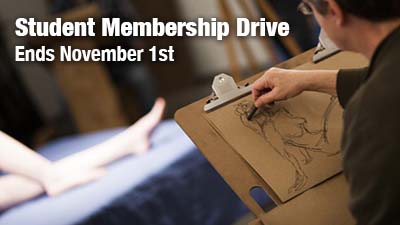I was talking about something with a friend this morning that I thought I might mention here…
There are two ways to approach a scene. The most direct way is to go straight for the guts of the idea- to think in the most direct and vital way possible to put the emotion and action of the scene across. The audience sees it, recognizes it and instinctually identifies with it. The ultimate proponents of this kind of animation are Rod Scribner and Irv Spence. (If you don’t know who they are, look them up!) Everything is super clear and grabs you by the collar so you can’t look away. It’s a straight line from the animator’s intent to the audience’s experience of it… like an idea wrapped in a laser beam.
The other way to approach a scene is to “finesse” it. You start with a solid basic framework of blocking and you start adding little details. Small hand gestures, secondary action like a hat sliding down over one eye as the character talks, overlapping action on clothing and hair like dingle balls swinging back and forth against the main accent. You stack up layer after layer. As the scene progresses, it becomes more fluid and smoother… glossy. The action seems more “real” because so much is going on at once and it is all so controlled and smooth and beautiful. Disney was the best at doing this sort of approach. Each scene Marc Davis and Frank Thomas animated was carefully wrapped up and tied with ribbons like a birthday present by a team of specialized craftsmen.
If you’re an independent animator, then working in “finesse mode” is a recipe for failure. The way Disney was able to pull that off required very low weekly footage counts for the animators and lots and lots of assistants tracking and following through on the layers and layers of overlap… incredibly time consuming and labor intensive. An individual animator making films by himself would never be able to compete with that. Getting directly to the guts is something that requires a great deal of experience and skill and judgement, but if you are really good, you can spit it out like a lightning bolt with no one helping you. The Disney animators were certainly able to do that if they wanted to, but the every department in the studio, from animation to ink & paint, was geared towards conforming each scene to the “Disney way of doing things”. That isn’t necessarily a bad thing. It produced a lot of very high quality animation. But for today’s animators building pyramids stone by stone isn’t a very good model to follow.
A lot of people look at animation and judge quality by how smooth it turns, or how polished the overlaps are. But audiences don’t care how much time it took you to animate a scene. They are looking at the performance of the character. They want to see something they recognize in the personality- something real. It’s easy in the frame by frame trenches to focus on details, but if you want to connect in the most efficient way, you should always be looking at your animation from a wider view… and trying to get the guts of the idea you are putting across. Anything else is just gilding the lilly.
If you become a *really* good direct animator, you will be so successful with audiences that you can afford to hire assistants to polish up your stuff for you. There’s no reason to focus on that while you are still growing and learning. Go for the guts.
Stephen Worth
Animation Resources
Back To School Days At Animation Resources
Fall is time to join Animation Resources as a student member. Annual dues for full time students and educators is discounted. It’s the biggest bargain in animation at only $70 a year. Animation School is great, but it doesn’t give you everything you need to become a professional animator. You need to invest in self-study to be successful in this highly competitive field. That’s exactly what Animation Resources can help you do if you become a member. Each day we’ll be highlighting more reasons why you should join Animation Resources. Bookmark us and check back every day.
There’s no better way to feed your creativity than to be a member of Animation Resources. Every other month, we share a Reference Pack that is chock full of downloadable e-books and still framable videos designed to expand your horizons and blow your mind, as well as educational podcasts and seminars. It’s easy to join. Just click on this link and you can sign up right now online.
https://animationresources.org/membership/levels/
FREE SAMPLES!![]()
Not Convinced Yet? Check out this SAMPLE REFERENCE PACK! It will give you a taste of what Animation Resources members get to download every other month!

JOIN NOW! https://animationresources.org/membership/levels/































